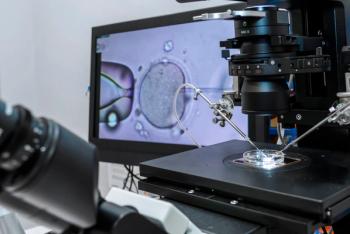
Do I really need a hysterectomy?
Ultimately, this is a question that can only be answered by you and your doctor. Often, a hysterectomy is an elective treatment, meaning there may be other options available to treat fibroids, endometriosis, uterine prolapse, and heavy bleeding.
Ultimately, this is a question that can only be answered by you and your doctor. Often, a hysterectomy is an elective treatment, meaning there may be other options available to treat fibroids, endometriosis, uterine prolapse, and heavy bleeding. However, in cases involving cancer, having a hysterectomy is commonly the only available treatment.
If having a hysterectomy is the best option for you, there are several types of hysterectomies available including minimally invasive procedures. Careful consideration should go into your decision. To read more about hysterectomy procedures and choices, go to Hysterectomy Treatment Options.
Conditions that may require a hysterectomy:
Uterine Fibroids: Uterine fibroids are benign tumors of muscle and connective tissue that develop within, or are attached to, the uterine wall.
Dysfunctional Uterine Bleeding: Dysfunctional uterine bleeding (DUB) is abnormal vaginal bleeding that occurs during a menstrual cycle that produced no egg (ovulation did not take place).
Cancer: Cancer involves the uncontrolled growth of abnormal cells that have mutated from normal tissues. This growth can kill when these cells prevent normal function of vital organs or spread throughout the body, damaging essential systems. Read more information on gynecological cancers provided from the National Cancer Institute by clicking the links below:
Pelvic Support Problems: The term "pelvic floor" refers to the group of muscles that form a sling or hammock across the opening of the pelvis. These muscles, together with their surrounding tissues, keep all of the pelvic organs (bladder, uterus, and rectum) in place so that the organs function correctly. A "pelvic floor disorder," then, is a problem with these muscles or the surrounding tissues that leads to dysfunction of one or more of the pelvic organs.
Endometriosis: Endometriosis occurs when tissue like that which lines the inside of uterus grows outside the uterus, usually on the surfaces of organs in the pelvic and abdominal areas, in places that it is not supposed to grow.
Pelvic Pain: Pelvic pain is a general term that health care providers use to describe steady pain, or pain that comes and goes, that occurs mostly or only in the lower abdomen area. In some cases, the pain might be severe and might get in the way of daily activities; in other cases, the pain might be dull and occur only during the menstrual cycle. Pelvic pain also describes pain that occurs during sexual intercourse.
References:
Sources
Important Note to Reader: The information in these Web pages is for your general knowledge and background only. Note that these Web pages contain information from various sources considered to be dependable. However, we make no representations, warranties or other expressed or implied warranties or guarantees regarding the accuracy, reliability or completeness of the information. Under no circumstance shall Gyrus ACMI, Inc., Olympus America Inc. and/or its or their respective affiliates, employees, consultants, agents or representatives (collectively "Gyrus") be liable for any costs, expenses, losses, claims, liabilities or other damages (whether direct, indirect, special, incidental, consequential or otherwise) that may arise from or be in incurred in connection with the information provided or any use thereof.
© 2010 Gyrus ACMI, Inc. All rights reserved. |
Newsletter
Get the latest clinical updates, case studies, and expert commentary in obstetric and gynecologic care. Sign up now to stay informed.
















